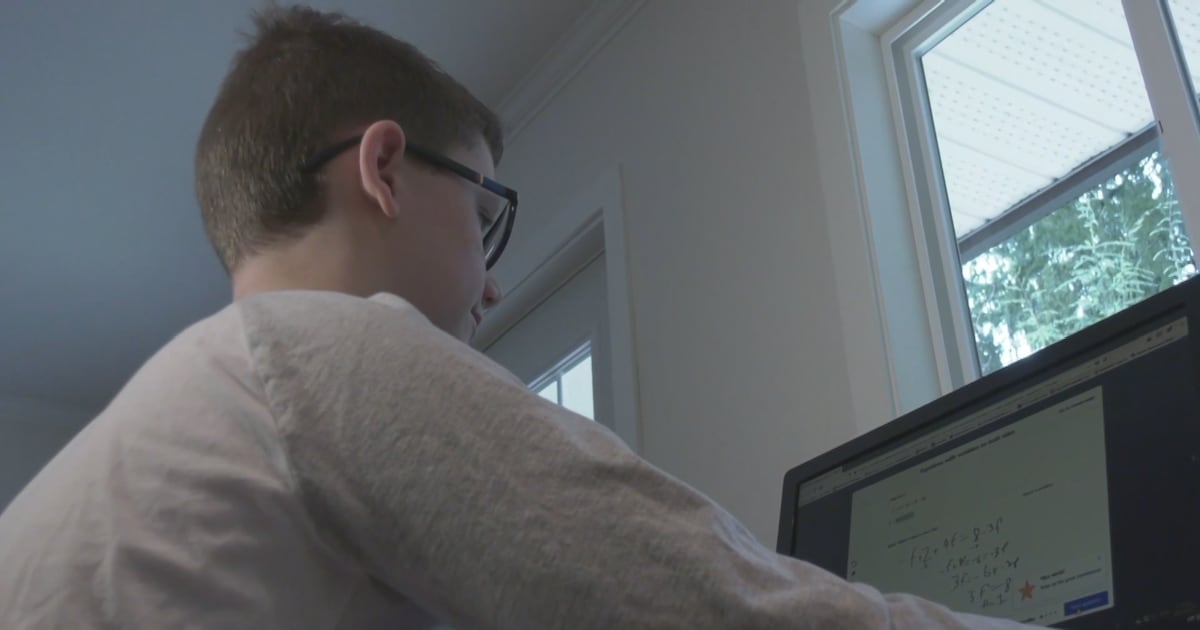Education
Surrey School District Launches Hybrid Learning Pilot Program

Students in Surrey, British Columbia, are adapting to a new educational model as the district introduces a hybrid learning program for high school students. This pilot initiative, which began this week, allows students to take up to 50 percent of their courses online. The program aims to equip students with skills necessary for future hybrid work environments.
Parents can opt their children into the program, as seen with Jill Lobley, whose Grade 10 son has chosen to participate in a careers course. “During COVID-19, he was online a lot and actually excelled, being able to work at his own pace,” Lobley stated. She believes some students will thrive in this format, while others may require more traditional classroom support. “Parents have been asking for more options. There are definitely kids that this will not work for, but there are others who can succeed with this approach,” she added.
The Surrey School District is not only offering new learning opportunities but also providing essential resources. On Friday, the school sent a letter to parents offering devices such as laptops and iPads for students who might not have access to their own technology.
Mark Pearmain, Superintendent of the Surrey School District, expressed hope that the program would help students prepare for hybrid courses in post-secondary education or the workforce. “We see this as an opportunity to provide our kids with the skills and competencies they need for the future,” Pearmain noted.
Despite its potential benefits, the program addresses only a small fraction of the larger challenges facing the district, including overcrowding and a shortage of resources. “It’s just one or two classes per school that we’re trying this in. So it’s really going to have minimal impact this year regarding our space challenges. It may be more significant if we expand in the future,” he explained.
Concerns About Learning and Screen Time
Dr. Shimi Kang, a child psychiatrist with Future Ready Minds, highlighted some challenges associated with increased screen time for teenagers, particularly in an academic context. “It’s already hard to focus, especially on academic subjects. This can be particularly true for students with neurodiversity or attention deficits,” Dr. Kang said. She echoed Lobley’s sentiments, noting that while some students may benefit from a hybrid learning environment, others might struggle.
“Digital literacy and learning to manage a hybrid environment could provide significant benefits,” Dr. Kang added. However, she cautioned against expecting teenagers to learn or work in the same way adults do. “The teenage brain is still maturing, and this process continues until the early 20s. As such, distractions can be a significant barrier for younger learners in a hybrid setup,” she explained.
Dr. Kang also emphasized the importance of balancing screen time with social interaction. “We are losing those micro moments of social connection, and loneliness is on the rise, along with other mental health issues like social anxiety,” she noted. She recommended that parents prioritize opportunities for socialization to help mitigate these concerns.
As the Surrey School District rolls out this hybrid learning pilot, the focus will remain on individual student experiences, with the hope that it will pave the way for more flexible and responsive educational practices in the future.
-

 Education3 months ago
Education3 months agoBrandon University’s Failed $5 Million Project Sparks Oversight Review
-

 Science4 months ago
Science4 months agoMicrosoft Confirms U.S. Law Overrules Canadian Data Sovereignty
-

 Lifestyle3 months ago
Lifestyle3 months agoWinnipeg Celebrates Culinary Creativity During Le Burger Week 2025
-

 Health4 months ago
Health4 months agoMontreal’s Groupe Marcelle Leads Canadian Cosmetic Industry Growth
-

 Science4 months ago
Science4 months agoTech Innovator Amandipp Singh Transforms Hiring for Disabled
-

 Technology4 months ago
Technology4 months agoDragon Ball: Sparking! Zero Launching on Switch and Switch 2 This November
-

 Education4 months ago
Education4 months agoRed River College Launches New Programs to Address Industry Needs
-

 Technology4 months ago
Technology4 months agoGoogle Pixel 10 Pro Fold Specs Unveiled Ahead of Launch
-

 Business3 months ago
Business3 months agoRocket Lab Reports Strong Q2 2025 Revenue Growth and Future Plans
-

 Technology2 months ago
Technology2 months agoDiscord Faces Serious Security Breach Affecting Millions
-

 Education4 months ago
Education4 months agoAlberta Teachers’ Strike: Potential Impacts on Students and Families
-

 Education4 months ago
Education4 months agoNew SĆIȺNEW̱ SṮEȽIṮḴEȽ Elementary Opens in Langford for 2025/2026 Year
-

 Science4 months ago
Science4 months agoChina’s Wukong Spacesuit Sets New Standard for AI in Space
-

 Business4 months ago
Business4 months agoBNA Brewing to Open New Bowling Alley in Downtown Penticton
-

 Business4 months ago
Business4 months agoNew Estimates Reveal ChatGPT-5 Energy Use Could Soar
-

 Technology4 months ago
Technology4 months agoWorld of Warcraft Players Buzz Over 19-Quest Bee Challenge
-

 Business4 months ago
Business4 months agoDawson City Residents Rally Around Buy Canadian Movement
-

 Technology2 months ago
Technology2 months agoHuawei MatePad 12X Redefines Tablet Experience for Professionals
-

 Technology4 months ago
Technology4 months agoFuture Entertainment Launches DDoD with Gameplay Trailer Showcase
-

 Top Stories3 months ago
Top Stories3 months agoBlue Jays Shift José Berríos to Bullpen Ahead of Playoffs
-

 Technology4 months ago
Technology4 months agoGlobal Launch of Ragnarok M: Classic Set for September 3, 2025
-

 Technology4 months ago
Technology4 months agoInnovative 140W GaN Travel Adapter Combines Power and Convenience
-

 Science4 months ago
Science4 months agoXi Labs Innovates with New AI Operating System Set for 2025 Launch
-

 Technology4 months ago
Technology4 months agoNew IDR01 Smart Ring Offers Advanced Sports Tracking for $169










